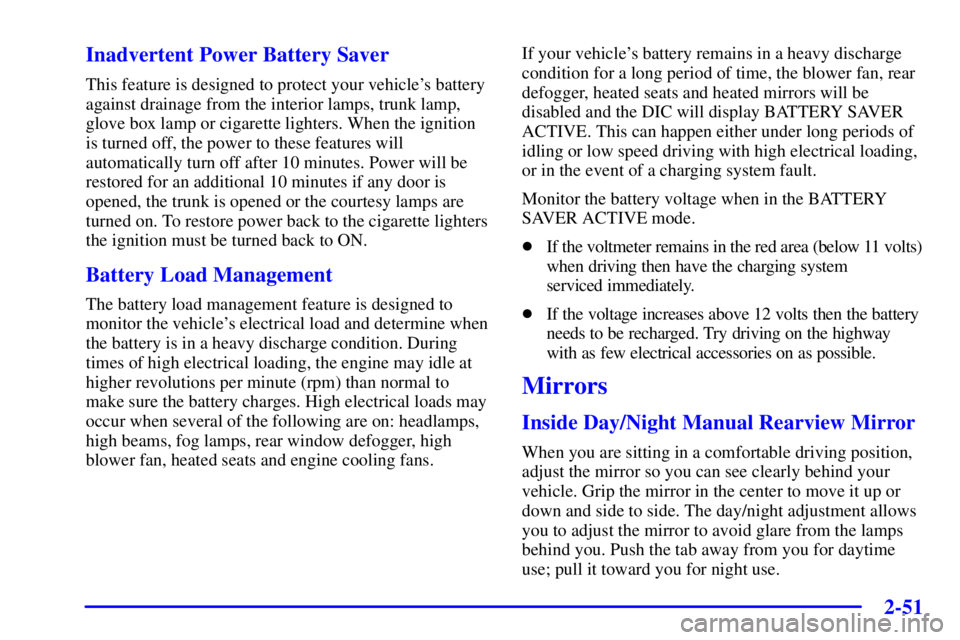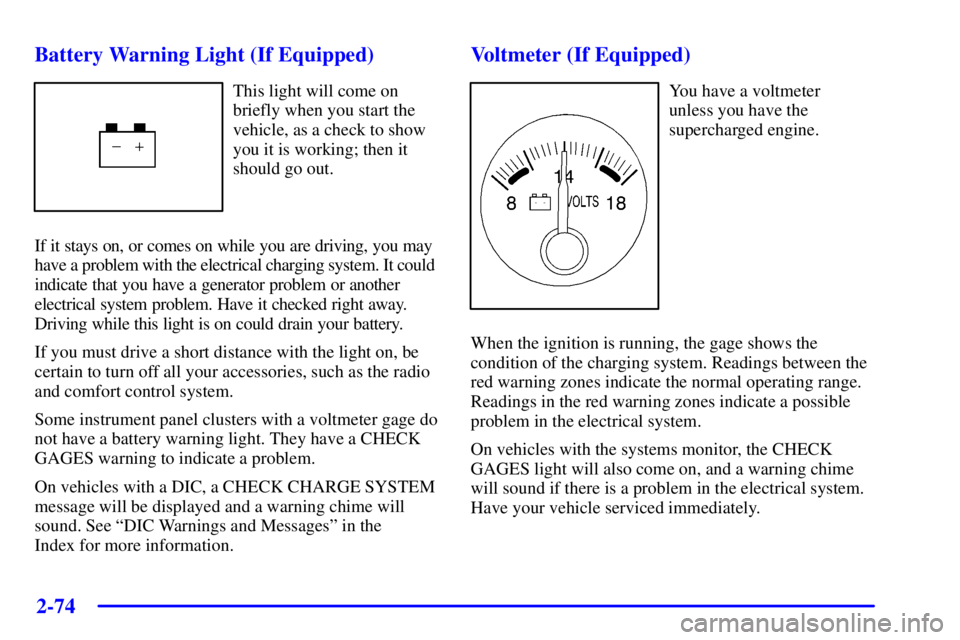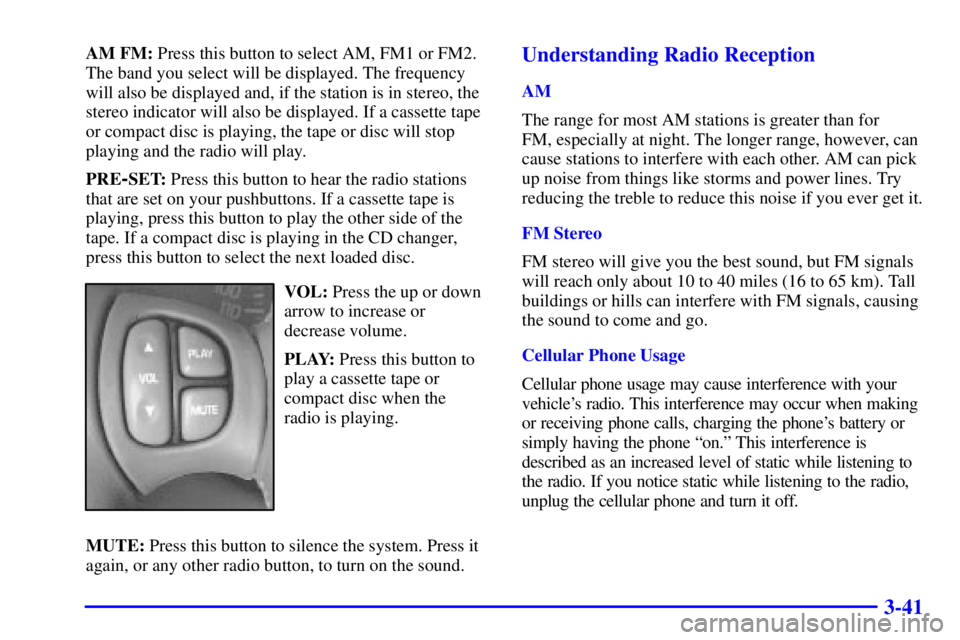Page 11 of 413

ix
For example,
these symbols
are used on an
original battery:
CAUTION
POSSIBLE
INJURY
PROTECT
EYES BY
SHIELDING
CAUSTIC
BATTERY
ACID COULD
CAUSE
BURNS
AVOID
SPARKS OR
FLAMES
SPARK OR
FLAME
COULD
EXPLODE
BATTERY
These symbols
are important for
you and your
passengers
whenever your
vehicle is driven:
CHILD
RESTRAINT
TOP STRAP
ANCHOR
DOOR LOCK
UNLOCK
FASTEN
SEAT
BELTS
POWER
WINDOW
AIR BAG
These symbols
have to do with
your lamps:
MASTER
LIGHTING
SWITCH
TURN
SIGNALS
PARKING
LAMPS
HAZARD
WARNING
FLASHER
DAYTIME
RUNNING
LAMPS
FOG LAMPS
These symbols
are on some of
your controls:
WINDSHIELD
WIPER
WINDSHIELD
WASHER
WINDSHIELD
DEFROSTER
REAR
WINDOW
DEFOGGER
VENTILATING
FAN
These symbols
are used on
warning and
indicator lights:
ENGINE
COOLANT
TEMP
BATTERY
CHARGING
SYSTEM
BRAKE
COOLANT
ENGINE OIL
PRESSURE
ANTI-LOCK
BRAKES
Here are some
other symbols
you may see:
FUSE
LIGHTER
HORN
FUEL
Vehicle Symbols
These are some of the symbols you may find on your vehicle. Also see ªWarning Lights and Gagesº in the Index.
Page 118 of 413

2-51 Inadvertent Power Battery Saver
This feature is designed to protect your vehicle's battery
against drainage from the interior lamps, trunk lamp,
glove box lamp or cigarette lighters. When the ignition
is turned off, the power to these features will
automatically turn off after 10 minutes. Power will be
restored for an additional 10 minutes if any door is
opened, the trunk is opened or the courtesy lamps are
turned on. To restore power back to the cigarette lighters
the ignition must be turned back to ON.
Battery Load Management
The battery load management feature is designed to
monitor the vehicle's electrical load and determine when
the battery is in a heavy discharge condition. During
times of high electrical loading, the engine may idle at
higher revolutions per minute (rpm) than normal to
make sure the battery charges. High electrical loads may
occur when several of the following are on: headlamps,
high beams, fog lamps, rear window defogger, high
blower fan, heated seats and engine cooling fans.If your vehicle's battery remains in a heavy discharge
condition for a long period of time, the blower fan, rear
defogger, heated seats and heated mirrors will be
disabled and the DIC will display BATTERY SAVER
ACTIVE. This can happen either under long periods of
idling or low speed driving with high electrical loading,
or in the event of a charging system fault.
Monitor the battery voltage when in the BATTERY
SAVER ACTIVE mode.
�If the voltmeter remains in the red area (below 11 volts)
when driving then have the charging system
serviced immediately.
�If the voltage increases above 12 volts then the battery
needs to be recharged. Try driving on the highway
with as few electrical accessories on as possible.
Mirrors
Inside Day/Night Manual Rearview Mirror
When you are sitting in a comfortable driving position,
adjust the mirror so you can see clearly behind your
vehicle. Grip the mirror in the center to move it up or
down and side to side. The day/night adjustment allows
you to adjust the mirror to avoid glare from the lamps
behind you. Push the tab away from you for daytime
use; pull it toward you for night use.
Page 141 of 413

2-74
Battery Warning Light (If Equipped)
This light will come on
briefly when you start the
vehicle, as a check to show
you it is working; then it
should go out.
If it stays on, or comes on while you are driving, you may
have a problem with the electrical charging system. It could
indicate that you have a generator problem or another
electrical system problem. Have it checked right away.
Driving while this light is on could drain your battery.
If you must drive a short distance with the light on, be
certain to turn off all your accessories, such as the radio
and comfort control system.
Some instrument panel clusters with a voltmeter gage do
not have a battery warning light. They have a CHECK
GAGES warning to indicate a problem.
On vehicles with a DIC, a CHECK CHARGE SYSTEM
message will be displayed and a warning chime will
sound. See ªDIC Warnings and Messagesº in the
Index for more information.
Voltmeter (If Equipped)
You have a voltmeter
unless you have the
supercharged engine.
When the ignition is running, the gage shows the
condition of the charging system. Readings between the
red warning zones indicate the normal operating range.
Readings in the red warning zones indicate a possible
problem in the electrical system.
On vehicles with the systems monitor, the CHECK
GAGES light will also come on, and a warning chime
will sound if there is a problem in the electrical system.
Have your vehicle serviced immediately.
Page 214 of 413

3-41
AM FM: Press this button to select AM, FM1 or FM2.
The band you select will be displayed. The frequency
will also be displayed and, if the station is in stereo, the
stereo indicator will also be displayed. If a cassette tape
or compact disc is playing, the tape or disc will stop
playing and the radio will play.
PRE
-SET: Press this button to hear the radio stations
that are set on your pushbuttons. If a cassette tape is
playing, press this button to play the other side of the
tape. If a compact disc is playing in the CD changer,
press this button to select the next loaded disc.
VOL: Press the up or down
arrow to increase or
decrease volume.
PLAY: Press this button to
play a cassette tape or
compact disc when the
radio is playing.
MUTE: Press this button to silence the system. Press it
again, or any other radio button, to turn on the sound.
Understanding Radio Reception
AM
The range for most AM stations is greater than for
FM, especially at night. The longer range, however, can
cause stations to interfere with each other. AM can pick
up noise from things like storms and power lines. Try
reducing the treble to reduce this noise if you ever get it.
FM Stereo
FM stereo will give you the best sound, but FM signals
will reach only about 10 to 40 miles (16 to 65 km). Tall
buildings or hills can interfere with FM signals, causing
the sound to come and go.
Cellular Phone Usage
Cellular phone usage may cause interference with your
vehicle's radio. This interference may occur when making
or receiving phone calls, charging the phone's battery or
simply having the phone ªon.º This interference is
described as an increased level of static while listening to
the radio. If you notice static while listening to the radio,
unplug the cellular phone and turn it off.